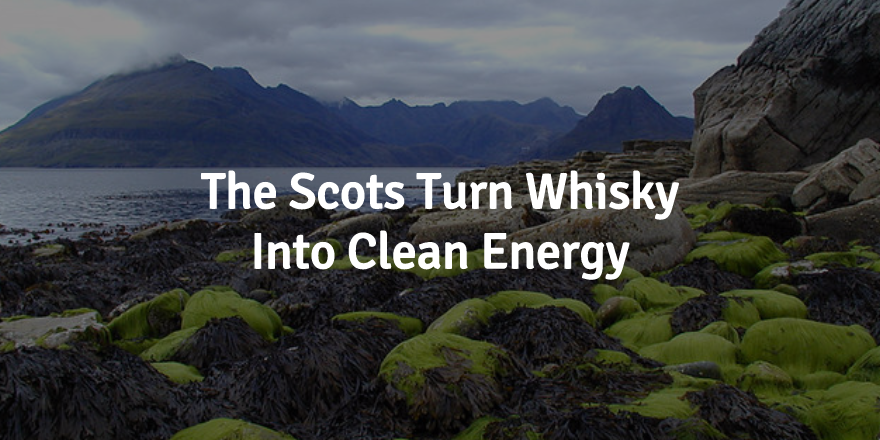Scotland uses whisky for more reasons than to imbibe it. Its £4.3 billion (US$6.8 billion) whisky industry provides year round access to a highly viable source of power. Highlanders take clean energy seriously and have found at least two ways to take their most popular export and make it renewable.
Rothes in Speyside Bioenergy Plant
This bioenergy plant uses whisky by-product to create power, so much power that it provides electricity to 9000 homes. The Rothes Project, a joint venture of Helius Energy Plc, Rabo Project Equity BV, and the Combination of Rothes Distillers Limited (CoRD), burns the “draff” (used grains in the distilling process) with wood chips to generate electricity.
50 of the 100 whisky distilleries are in Speyside so the by-products of Glenlivet, Chivas Regal, Grouse and 9 other whiskies are used at the plant.
Celtic Renewables
Edinburgh company Celtic Renewables, founded by Professor Martin Tangney, Head of Biofuel Research Centre at Edinburgh Napier University, has presented proof that they can transform distillery waste into biofuel. Celtic Renewables combines draff, barley which aids in fermentation, and pot ale (the yeast heated during distillation) to produce biobutanol. Biobutanol, a “drop-in fuel”, can be introduced to a car’s gas tank without conversion and blended with diesel and biodiesel for planes. This bio-fuel generates clean energy for cars and planes and is a direct substitute for fossil fuels.
Though the developments with whisky as energy are remarkable, Scotland also uses clean energy in the form of wind, wave and tide power. In fact, the country’s renewable generation is approximately 32% of UK’s total renewable generation and 40.3% of Scotland’s electricity came from renewables as of 2012 (not just from spirits). And with approximately 3 million tons of whisky waste by-product discarded by the industry each year, whisky serves as yet another, ingenious source of clean energy for the Isles.


